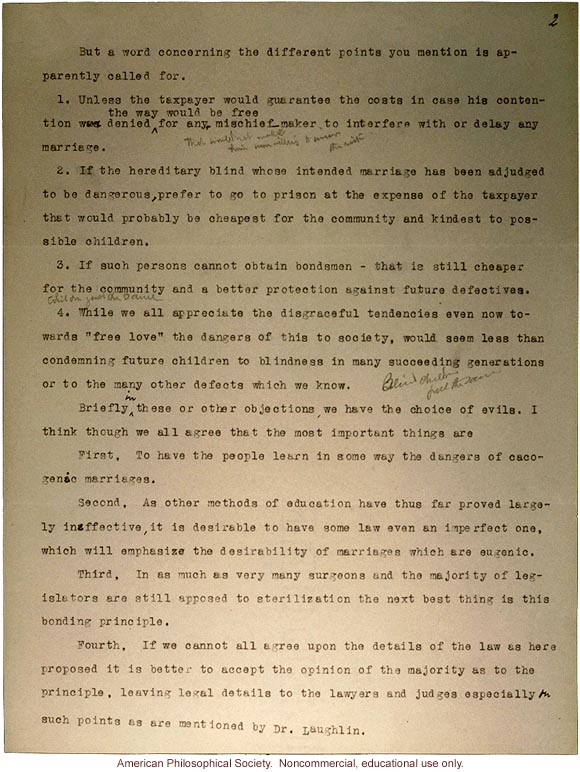But a word concerning the different points you mention is apparently called for.
1. Unless the taxpayer would guarantee the costs in case his contention was denied the way would be free for any mischief maker to interfere with or delay any marriage. [illegible handwriting]
2. If the hereditary blind whose intended marriage has been adjudged to be dangerous, prefer to go to prison at the expense of the taxpayer that would probably be cheapest for the community and kindest to possible children.
3. If such persons cannot obtain bondsmen - that is still cheaper for the community and a better protection against future defectives.
[illegible handwriting]
4. While we all appreciate the disgraceful tendencies even now towards "free love" the dangers of this to society, would seem less than condemning future children to blindness in many succeeding generations or to the many other defects which we know. [illegible handwriting]
Briefly, in these or other objections we have the choice of evils. I think though we all agree that the most important things are
First, To have the people learn in some way the dangers of cacogenic marriages.
Second, As other methods of education have thus far proved largely ineffective, it is desirable to have some law even an imperfect one, which will emphasize the desirability of marriages which are not eugenic.
Third, In as much as very many surgeons and the majority of legislators are still apposed[sic] to sterilization the next best thing is this bonding principle.
Fourth, If we cannot all agree upon the details of the law as here proposed it is better to accept the opinion of the majority as to the principle, leaving legal details to the lawyers and judges especially on such points as are mentioned by Dr. Laughlin.


